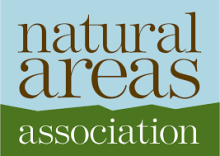Resource information
The relationship between landscape pattern and the distribution and spread of exotic species is an important determinant of where and when management actions are best applied. We have developed an interdisciplinary approach for prioritizing treatment of harmful, nonnative, invasive plants in National Park landscapes of the Mid-Atlantic USA. The approach relies upon a detailed model of reinvasion risk that combines information on: (1) global factors representing park-level infestation from seed and sprout, (2) landscape factors including disturbance-based spread vectors and neighborhood seed density, and (3) local factors determining establishment probability based on habitat suitability. Global seed rain estimates are derived empirically from park inventory data and modified by information on species reproductive strategies. Landscape-level propagule pressure is modeled spatially using species life history characteristics including dispersal attributes, connectivity to nearby plant populations, and increased propagule pressure through disturbance. The local-scale habitat suitability model uses a Mahalanobis distance approach, parameterized from plant inventory plot data and GIS-based data on plot wetness, land cover, slope, radiation, and soil characteristics. We illustrate the model for Ailanthus altissima (tree-of-heaven) in Antietam National Battlefield Park. The results of the A. altissima modeling highlight regions of the park where eradication would be most prudent and feasible based on current infestation patterns and landscape heterogeneity. Although the success of different treatment modalities is often considered in invasive species management, a spatially explicit assessment of likely treatment success is rarely undertaken. Our approach provides a valuable tool to assist natural resource practitioners to prioritize management options in confronting biological invasions.



